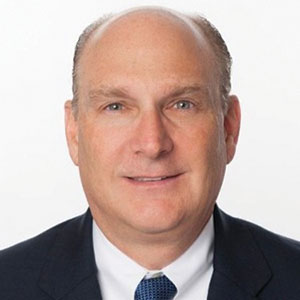CareCentrix’s Gavras on holistic health care

By Theresa Flaherty, Managing Editor
Updated 8:23 AM CDT, Fri May 27, 2022
 HARTFORD, Conn. – A pulmonologist by training, Dr. Jonathan Gavras has more than 20 years of experience as a health care executive, including leadership roles at several health plans, most recently president of the Florida market at Bright HealthCare.
HARTFORD, Conn. – A pulmonologist by training, Dr. Jonathan Gavras has more than 20 years of experience as a health care executive, including leadership roles at several health plans, most recently president of the Florida market at Bright HealthCare.
As a result, he’s seen firsthand the importance of value-based care and how the roles of payers and providers have evolved.
“Initially, they may be looking for someone to come in and manage making sure the patient gets the home health care and DME they need in a timely, quality way,” he said. “Where that’s evolved over time, now they are looking at, what are you going to do to help manage the patient.”
Gavras, who recently joined CareCentrix as senior strategic clinical advisor, spoke with HME News about what he sees as the future of a “holistic” health care model.
HME News: What attracted you to your new role at CareCentrix?
Dr. Jonathan Gavras: The rising incidence and costs of chronic disease and the cost of care and just knowing that more and more health care delivery (is shifting) outside the acute care and institutional settings and into the home and CareCentrix takes a more holistic approach. I’m a big believer in their model and have witnessed their success.
HME: What are some of the trends you are seeing in health care?
Gavras: Some of the major trends I see are the explosion of specialty pharmacy and drug therapy which is a large part of the future of health care and that have now made (certain diseases) chronic vs terminal. More and more of that care is delivered through the medical benefit and infusion has moved out of the hospital to the home. More than 50% of the people in U.S. have a chronic disease, and 27% have two or more. These diseases more and more require a very holistic approach in how you manage them.
HME: What are payers looking for from providers these days?
Gavras: With the expansion of the Affordable Care Act, particularly during COVID, over 50% of health care funding comes from the government. For the health plan to be successful, they need to manage that revenue, which is very closely tied to outcomes and patient satisfaction. With so much care delivered outside the hospital and in the community, they need someone to close the gaps.
HME: How does CareCentrix’s HomeBridge platform help with that?
Gavras: We pull in local community social determinants, such as transportation, social vulnerability and food access, as well as individual social determinants, such as living situation, education or consumer data. Additionally, we pull from the patient’s clinical record – things like fall risk, mobility and medication complexity. Patient adherence predictions and local provider performance layer in to ensure each member is matched and discharged at the right level of care. It helps us understand the whole patient – the biopsychosocial model.
Comments